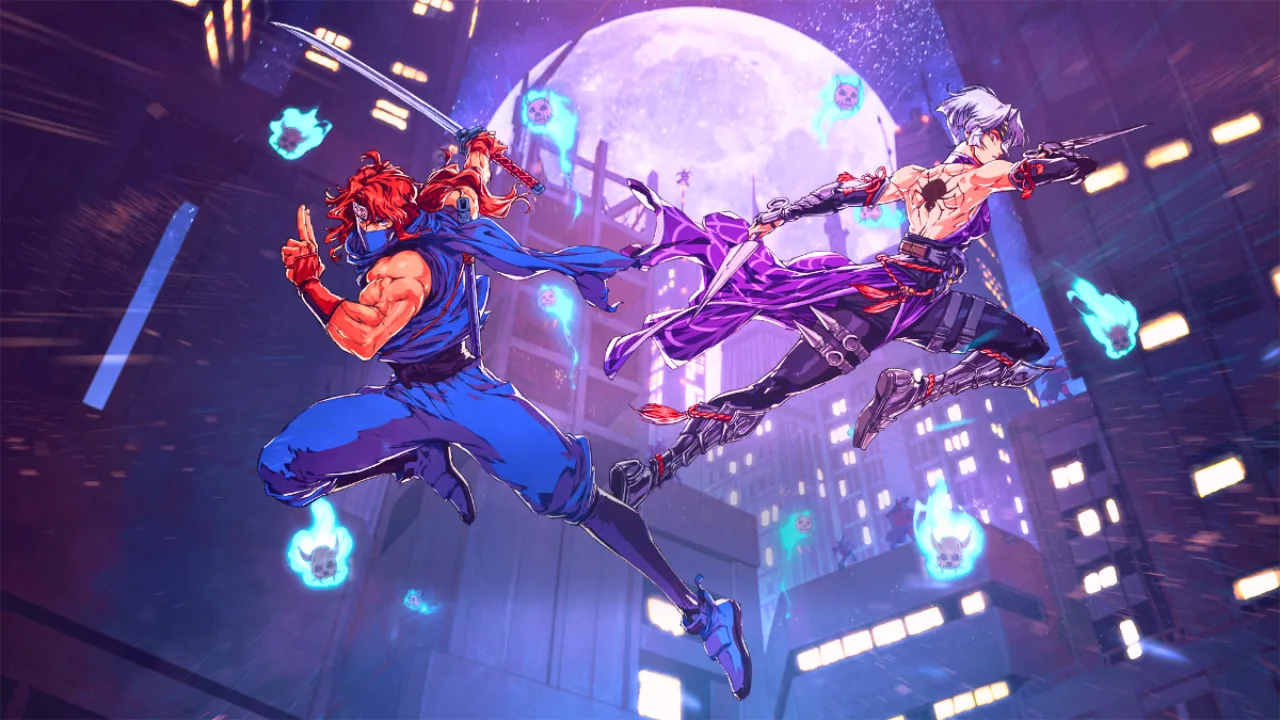From an outside, fantastical point of view, aren’t ninjas really cool? Koei Tecmo seems to think so, as they’ve declared 2025 to be “The Year of the Ninja”. First a remaster of Ninja Gaiden 2 Black, to prepare us for Ninja Gaiden 4 later this year. But in the interim, we’ve got something else to tide us over in Ninja Gaiden: Ragebound.
Unlike its numbered entries, Ninja Gaiden: Ragebound is instead 2D and reminiscent of the early days of the series. That is to say challenging, but with modern graphics and some additional challenges-within-the-already-challenging action. Oh, and a whole lot of flip-out tricksy ninja skills, obviously.
Made by a team with a newly-established pedigree in this type of genre, does Ragebound stand out or should it disappear back into the shadows and slink off? Let’s flip around and find out.
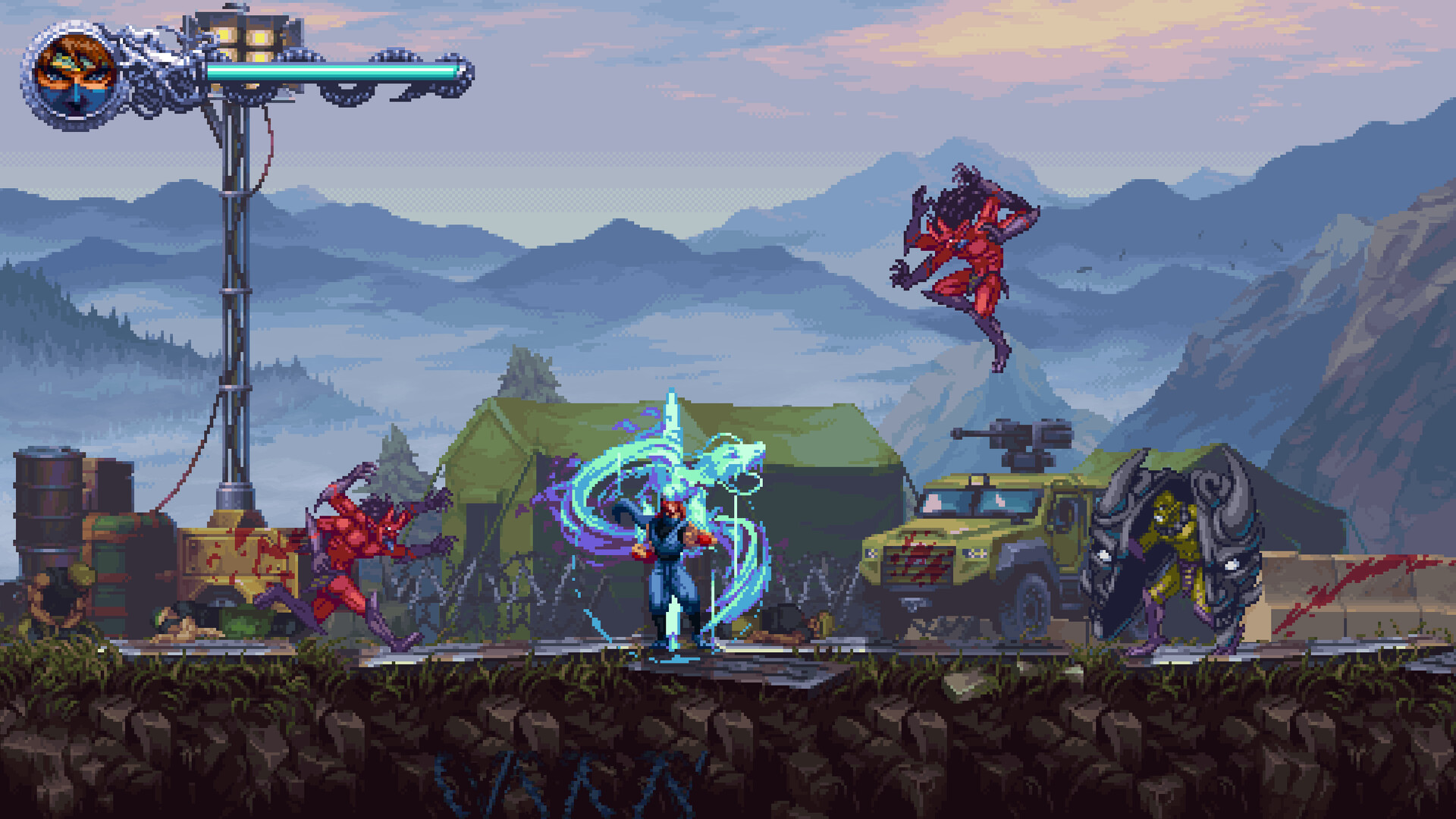
The Apprentice Becomes The Master
If you’re new to Ninja Gaiden, and may be stressing about where this fits in the canon, don’t worry. Ragebound does have a story but fortunately, it’s pretty straightforward and furthermore, it doesn’t need a expert knowledge of the lore. If you know who Ryu Hayabusa is, then bonus points, but we’re not playing as him this time so it’s a bit redundant.
Instead, we’re put into the jika-tabi of Kenji Mozu, a student under Master Ninja Hayabusa. When the latter is called off to America, presumably to do mainline game stuff, Hayabusa village is conveniently besieged by demons. As is his wont, young Kenji sets out to drive them back, save the day, and everything else that we know from classic NES-style adventures.
Yet this doesn’t go to plan when Kenji, and we by proxy, stumble across rival Black Spider Clan kunoichi Kumori. The BSC are trying to make allegiances with the demons, something the Hayabusa clan rightfully frowns about. As to expected, the demons can’t be trusted and Kumori gets caught.
And this is where it gets interesting…
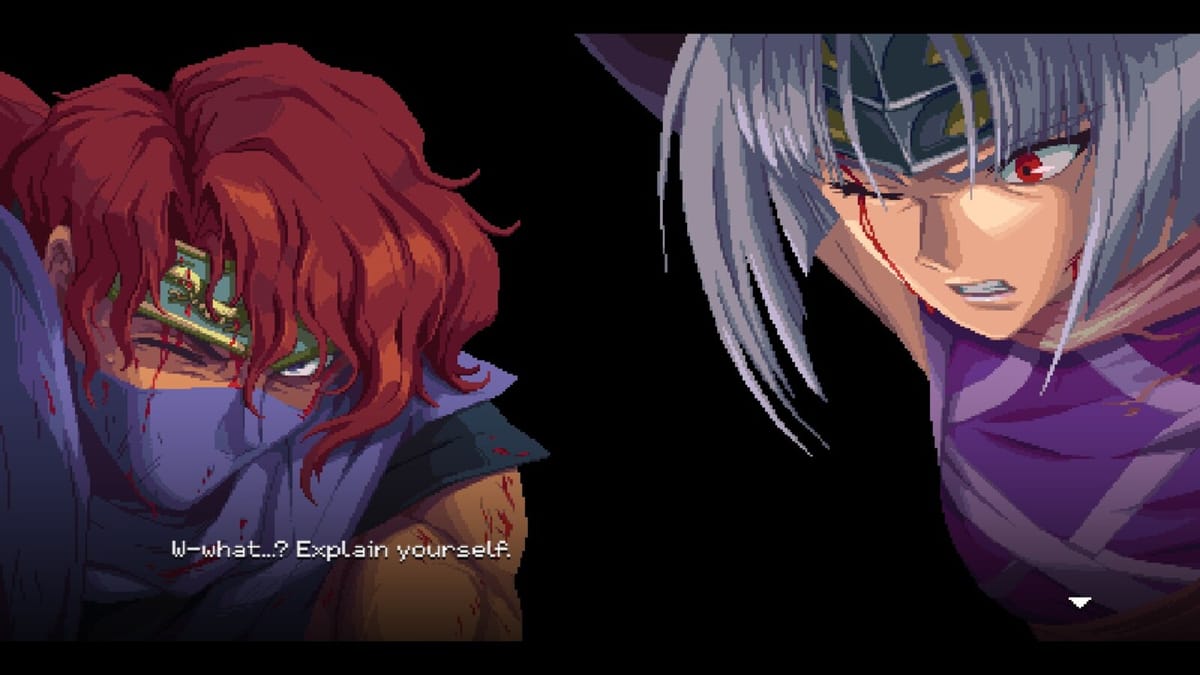
When Two Become One
As is normally the case, Kenji’s haste to confront the demons doesn’t go well. Mortally wounded, Kumori comes up with a cunning plan: stab her with the magical dagger of mcguffin. Originally part of an ill-conceived plan within the proposed alliance, it instead binds Kumori to Kenji.
That’s right, we’re doing the rival-buddies thing, with Kumori’s spirit bound to the alive-and-healthy-again Kenji. Together, these bickering foes must put aside their differences and fight the forces of evil. Again, the plot is pretty straightforward, but that’s not necessarily a bad thing.
The demons need to gather several crystals to release them fully from the underworld, naturally. Our friend and shopkeeper Muramasa has, conveniently, gone to great lengths to hide them around the world. Which, if you’ve figured out, means level-hopping to levels in all shapes and sizes, from building sites to sunken ships.
Will these two unlikely heroes put aside centuries of hatred, or will there be some tears and betrayals? Well, you’ll have to play it to find.

Go Right Ninja, Go!
As one may have inferred from the screenshots (or watched the trailer at the beginning), Ninja Gaiden: Ragebound is a 2D action platformer/side-scroller in the traditional sense. What that means is that, in its simplest form, players are going from left to right, no backtracking, occasionally climbing or descending until the end of the level. Where, more often than not, there’ll be a boss of some sort.
Yes, it is going back to a time of, funnily enough, original Ninja Gaiden days. Kenji will have to hop, flip and jump his way over spikes, death pits and oncoming enemies, as well as their projectiles. There’s even wall hanging, on most surfaces, that will be utilised to navigate said pits. It can be tricky at times, as the levels progress, but levels are dotted with checkpoints to ease the burden of dying.
Whilst it does evoke memories of old, my modern comparison would be The Messenger (because I’ve just gone through it again). There’s even a similar double-jump mechanic too. The Messenger has its Cloudstep, which allows another jump after a successful mid-air attack. Ragebound has the Guillotine Boost, a timed prompt on an enemy to allow another jump. It’s a valuable technique: there’s a particular docks level that requires this technique to hop over a sequence of jumping fish.
It’s all very fast and fluid, with a fairly easy learning curve. The levels start simple enough, before you’ll be chaining traversal techniques together lickity split, or dying.
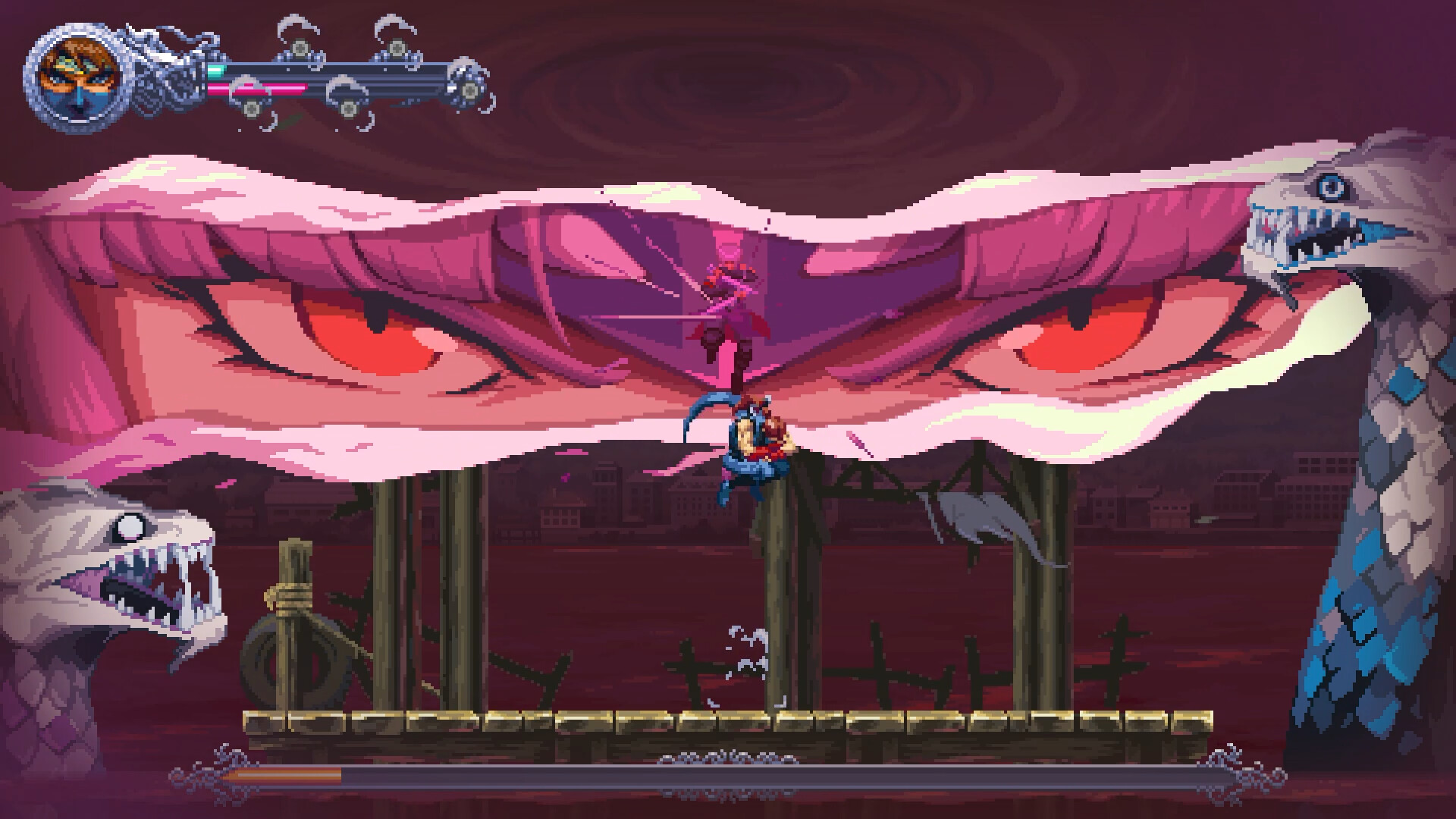
Give Me Inner Peace Or I’ll Mop The Floor With Ya
The butter to the platforming’s bread is the combat. Whilst mainline Ninja Gaiden series, as well as similar games like Stellar Blade, bog down players with loads of moves, Ragebound keeps it simple. There’s no shopping trolley amounts of weapons to master, just Kenji’s sword and Kumori’s kunai. That’s it: one for slicing up close, the other for projectile damage and hitting buttons.
Whilst I make that sound quite bland, it’s actually not. Most enemies die in one hit, but there’s plenty of them. There’s aforementioned projectiles to avoid or parry, as well as flying sods too. There’s even bigger, shield-bearing baddies that take a few more hits to kill. Fortunately, there’s a neat mechanic in the Hypercharge system.
Some enemies will have a glowing aura around them: strike these and Kenji will gain a Hypercharge attack. This can be stored for a few seconds and, provided he doesn’t get hit, will take out practically anything with one hit. On bosses, it’ll stun them for a few more slaps. Hypercharge auras come in two flavours; a blue for Kenji to strike, or a purple one for a Kumori kunai to hit. Get it wrong and the Hypercharge is lost, so there’s a bit of tactic involved here.
Then there’s the Ragebound Arts. These, as you can see above, are screen-filling super attacks that are great in a pinch, or boss fights. Or, if one wants to be defensive, there’s an Art that allows Kumori to create a shield around Kenji. Again, the best thing to do is play around with them.
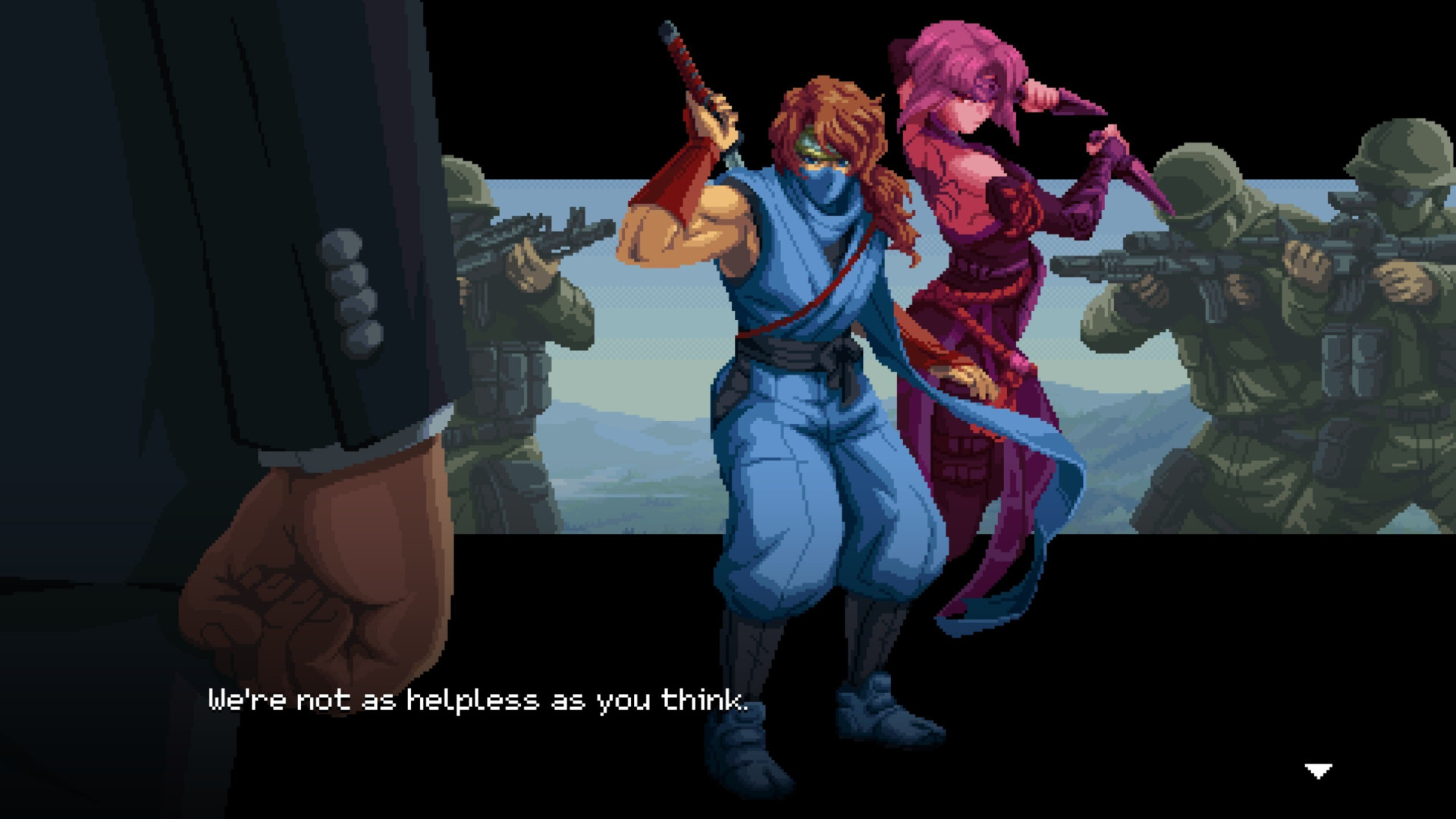
Looking This Good Feels Blasphemous
The only strength that Ninja Gaiden: Ragebound has going for it is just how gorgeous it looks. No, that’s not hyperbole, it genuinely is pleasing on the eye regardless of the format. I’ve heard there’s been a few latency issues on Nintendo Switch 2 version, but I’ve been playing it on the Switch Lite and haven’t come across anything.
If it looks familiar, it’s because The Game Kitchen are the folk behind the Blasphemous series. If you’re not sure what they’re like, here’s Josh’s review for the awesome second game. I suppose we can now call them masters of their craft, as they’ve perfected that retro-inspired pixel art style beautifully. It gives me old school Treasure vibes, if you get me. That era of Mega Drive games like Gunstar Heroes, or Alien Soldier. Whilst not as screen-tearingly fast, it still feels smooth and quick to play.
It’s also got some enjoyable writing in it too. Again, coming off the back of The Messenger, I appreciate a bit of “the banter”. So listening to Kumori and Kenji bicker, frequently, causes a little mirth in me. It doesn’t lean on pop culture references, or Whedon-esque backhanded bitching. It’s just that lovely blend of wit and reluctance to begrudgingly help each other, a story told many times over.
What did make me smile the hardest was the jetski part: Kumori sat side-saddle next to Kenji, even though she literally has no reason to do so.
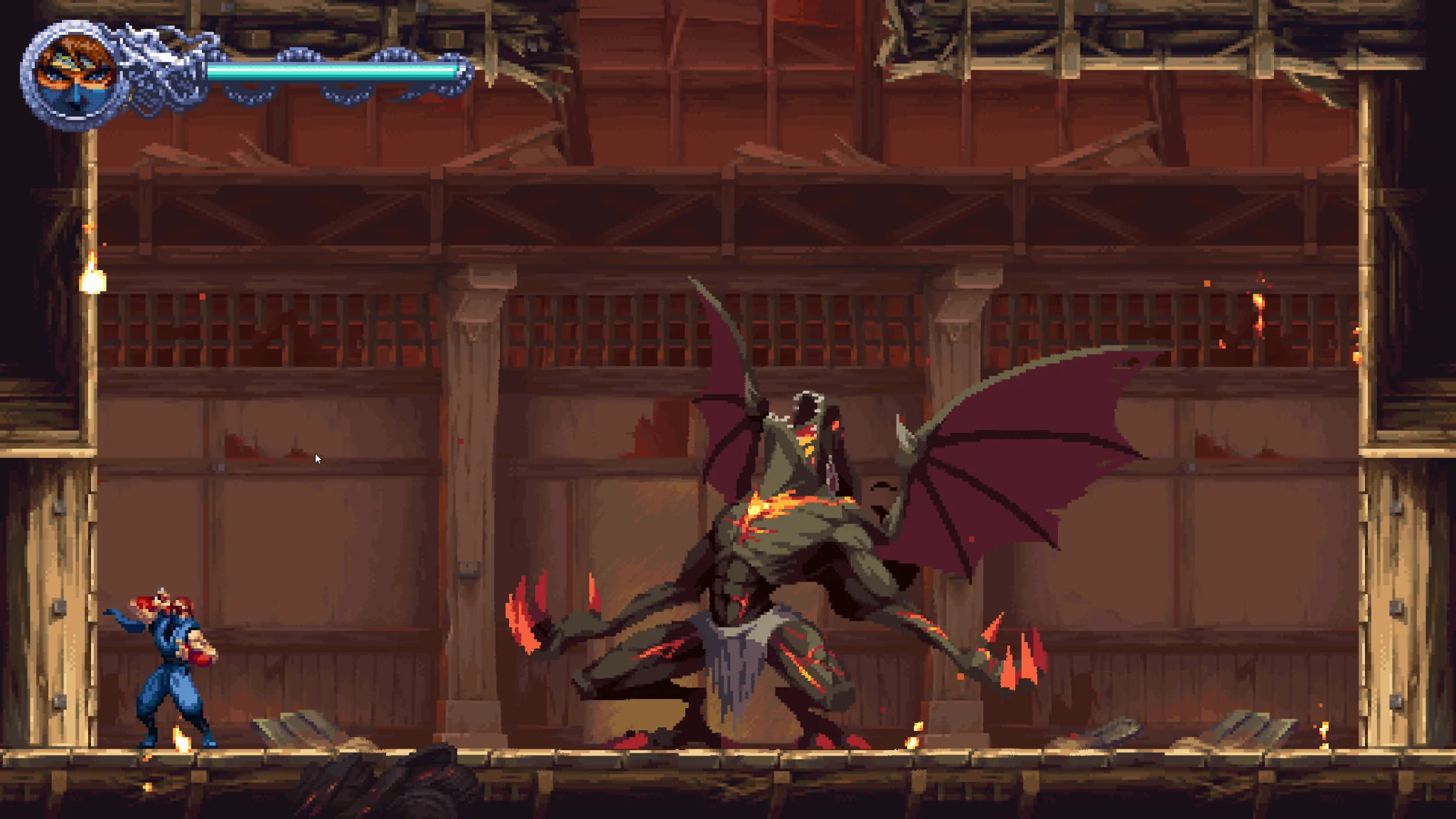
Bound To Rage At It Eventually
On the surface, Ninja Gaiden: Ragebound is a moderately short game. Well, short enough for those who want a little bit of challenge and a neat little story to mostly see. However, one must remember that this is still a Ninja Gaiden game. You millenials may think Dark Souls is tough: Ninja Gaiden passed the torch. What makes it hard, you wonder? Collectibles and challenges.
The former is currency for upgrades in Muramasa’s shop. These are dotted throughout a level, with some being obvious and others being right bastards to find. It is possible to do without, but come on, who’s going to ignore one at what looks like arm’s length? The latter is the level-based challenges, and again, these start easy and become harder.
There’s three per level, starting with simple things like “Get X kills with Guillotine Boost/Hypercharge”. Fine, you’ll crack these out by the middle checkpoint. But then it gets steeper, like no falling in pits, or getting hit at all. Some are a test of patience, such as saving a Ragebound Art for a boss.
But if you want challenge, then you’ll be wanting to aim for 100% completion and the game’s hard mode. I won’t give away too much, but it’s more than just increased enemy health. Harder levels and more spikes, for instance. Again, it’s strictly for the hardcore and completely optional… but there’s some closure at the end of it.
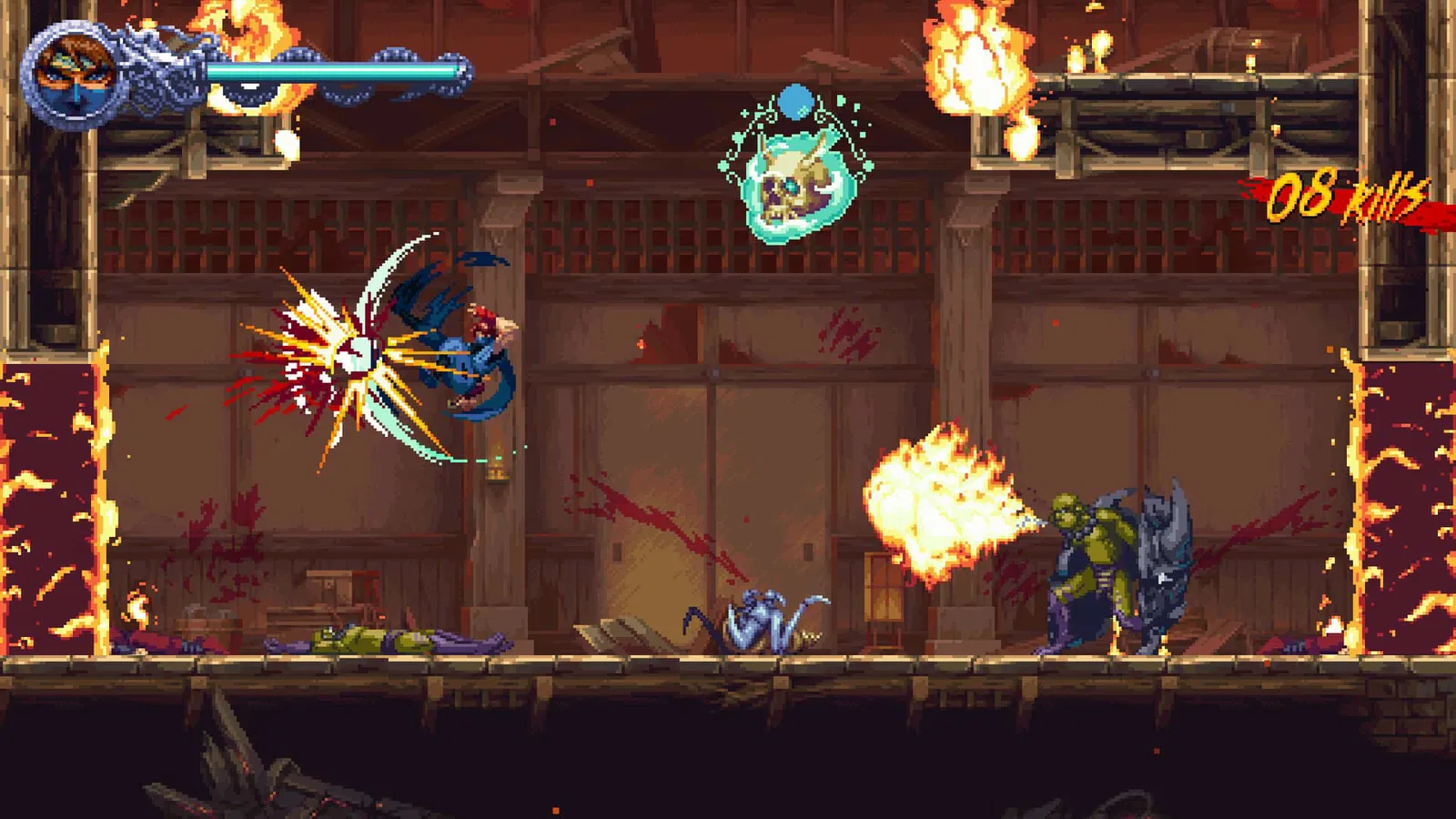
Flip Out Like A Ninja
That’s pretty much all there is to Ninja Gaiden: Ragebound. It’s a short game on the surface, and worth the entry price, but there’s more to do if players crave challenge. If you’ve cut your tooth on the classics, you’ll wear this like a comfortable hoody. Yet this isn’t that archaic that if you have only played modern contemporaries, like those I’ve mentioned or My Friend Pedro, or even Blasphemous, this won’t be too alien to get into.
As I say. it’s beautiful to look at and I’m playing it on the most graphically basic format. Am I going to eventually buy it on PlayStation sometime later? You’re damn right I am, this is right up my street. It’s almost making me want to give Ninja Gaiden 2 Black a go, despite being a different style of game.
What with Ninja Gaiden 4 on the way, as well as Sega putting out a new Shinobi (keep an eye out for Paul’s review soon), Koei Tecmo are right. If gaming is like fashion in that it’s cyclical, then this is like the ninja craze that swept America in the 80’s. Ninjas are cool again, and Ragebound is proof of that.
Ninja Gaiden: Ragebound is available now on Nintendo Switch and Switch 2 (reviewed on Switch Lite), PlayStation 4 & 5, Xbox One and Series S|X and PC via Steam.
Developer: The Game Kitchen
Publisher: DotEmu, Koei Tecmo
Disclaimer: In order to complete this review, we were provided with a promotional copy of the game. For our full review policy, please go here.
If you enjoyed this article or any more of our content, please consider our Patreon.
Make sure to follow Finger Guns on our social channels. Twitter, Facebook, Twitch, Spotify or Apple Podcasts – to keep up to date on our news, reviews and features.
